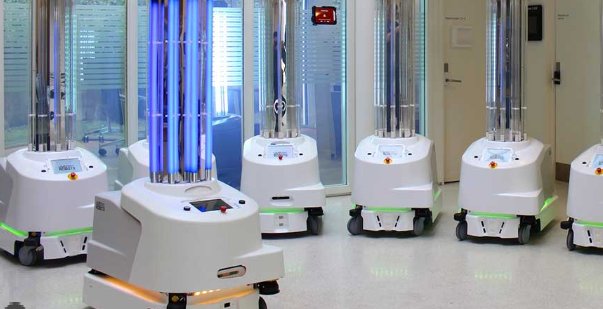Disinfection Robots Market to Surpass USD 15,546.1 Million by 2028| Focusing on Top Leading Vendors
Disinfection Robots Market Size, Trends, Industry & Forecast, 2031 | KR

Disinfection Robots Market size was valued at USD 3,730.0 million in 2023 and is projected to grow from USD 4,422.7 million in 2024 to USD 15,546.1 million by 2031, exhibiting a CAGR of 19.67% during the forecast period.
Definition:
The market involves autonomous and semi-autonomous robotic systems designed to disinfect surfaces, air, and environments. These systems utilize technologies such as UV-C light, hydrogen peroxide vapor, and chemical sprays.
Access Detailed Research @ https://www.kingsresearch.com/disinfection-robots-market-1715
Key Companies in Disinfection Robots Market:
- ADIBOT
- Xenex Disinfection Services Inc.
- UVC Solutions
- Tru-D SmartUVC
- Taimi Robotics Technology Co.Ltd.
- Finsen Technologies Limited
- Blue Ocean Robotics
- ROBOTLAB Inc.
- Skytron, LLC
- JanyuTech
- Loop Robots
- Haystack Robotics
- Symbotic Inc.
- Badger Technologies
- DreamVu
Future Market Trajectory:
Multi-Function Platforms: The integration of disinfection capabilities with other facility management functions (surveillance, delivery, maintenance monitoring) will create higher-value robotic solutions applicable across multiple use cases.
AI-Enhanced Operation: Advanced artificial intelligence will enable robots to identify high-touch surfaces, adjust disinfection protocols based on usage patterns, and autonomously respond to contamination events.
Miniaturization and Specialization: Purpose-built disinfection robots designed for specific environments (operating rooms, patient rooms, classrooms) will expand market penetration through optimized form factors and capabilities.
Predictive Disinfection Models: Integration with occupancy sensors, air quality monitors, and pathogen detection systems will enable preemptive disinfection interventions rather than scheduled protocols.
Key Challenges and Market Constraints:
High Initial Investment: Average acquisition costs ranging from $40,000 to $125,000 per unit represent a significant barrier for smaller facilities, though this is increasingly mitigated by RaaS models.
Integration Complexities: Interoperability with existing facility management systems and workflows remains challenging, requiring substantial customization and implementation support.
Efficacy Verification: Standardized methodologies for validating disinfection effectiveness in real-world environments remain under development, creating uncertainty regarding performance claims.
Human-Robot Collaboration: Optimal delineation of responsibilities between automated systems and human cleaning staff continues to evolve, with significant variability in implementation approaches.
By Regional Analysis:
North America: Currently leads with 38% market share, characterized by early adoption in healthcare settings and substantial private capital investment in robotics startups.
Europe: Holds approximately 31% of the market, with particularly strong adoption in Nordic countries and Germany, supported by progressive healthcare digitization initiatives.
Asia-Pacific: Represents 23% of the current market but demonstrates the fastest growth rate (projected 24.7% CAGR through 2032), driven by substantial healthcare infrastructure development in China, Japan, South Korea, and Singapore.
Rest of World: Accounts for 8% of the market, with notable growth in Gulf Cooperation Council countries and select markets in Latin America.
TABLE OF CONTENT
1 INTRODUCTION OF THE GLOBAL DISINFECTION ROBOTS MARKET
1.1 Market Definition
1.2 Market Segmentation
1.3 Research Timelines
1.4 Limitations
1.5 Assumptions
2 EXECUTIVE SUMMARY
3 RESEARCH METHODOLOGY
3.1 Data Collection
To be Continued . . . .
What's Your Reaction?

















.jpg)
